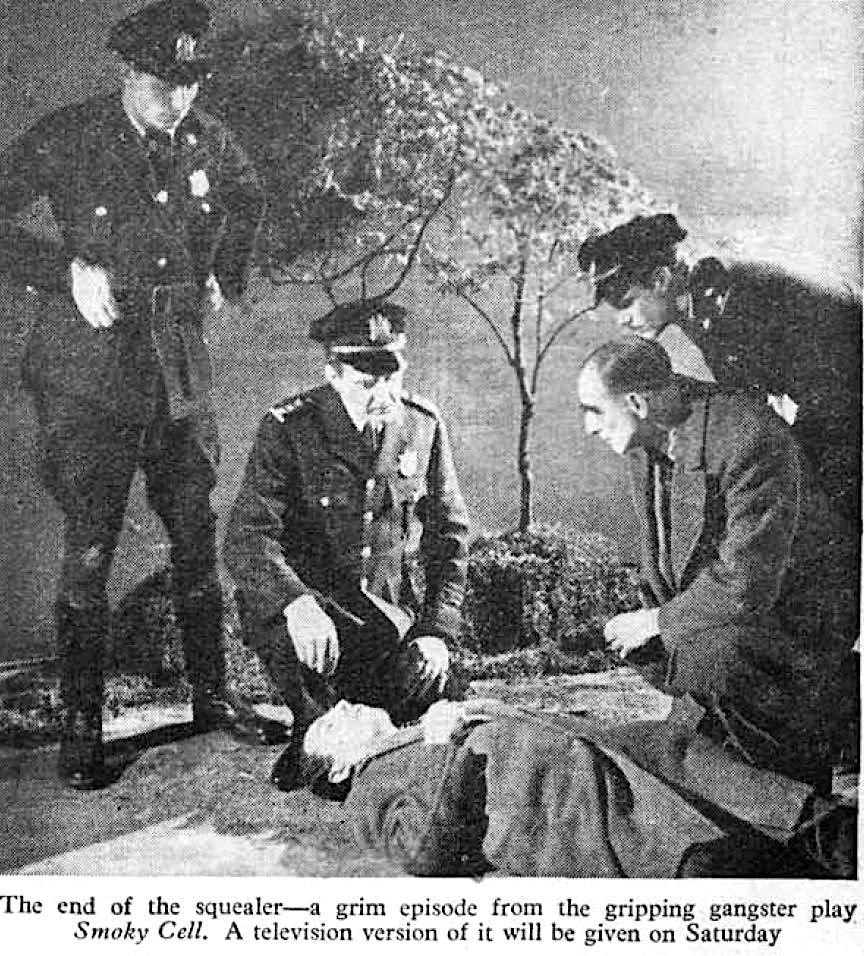OTD in early British television: 24 June 1939

John Wyver writes: On Saturday 24 June 1939, following a day of visits to Lord’s for the Test match against the West Indies, viewers could enjoy the evening’s 70-minute staging of Edgar Wallace’s play Smoky Cell. Producer Michael Barry was in charge, marshalling a large cast led by American-born, London-based Percy Parsons as police chief O’Regan.
The crime dramas of Edgar Wallace, who had died seven years before, became increasingly important to Alexandra Palace as the new television service realised that it needed more popular plays to attract viewers.
Producer Royston Morley presented On the Spot in July 1938, and after two performances then, this was revived at the end of April 1939. The Case of the Frightened Lady by Wallace was also brought to the screen by Michael Barry in July 1938, when one critic wrote that it
came over very well indeed. Again the scenery and camera work left little to be desired. The acting was clean and clear without over-emphasis, and viewers lost no point in this thrilling mystery, despite somewhat severe cutting.
[The production was] complicated, ambitious, genuinely thrilling and very finely acted by a fine cast headed by Miss Cathleen Nesbit and Mr Walter Hudd. It was produced entirely successfully with a conspicuously film-like technique by Mr Michael Barry.
According to Wikipedia, Wallace’s Smoky Cell is a thriller that was first staged in 1930, when it was a West End success. Percy Parsons was in that cast too, and the director was Carol Reed. It was an inspired by a visit Wallace had recently made to the United States, and the setting is America where a group of detectives hunt down a notorious racketeer. In 1935, Wallace’s former assistant Robert Curtis wrote a novel of the same title based on the play.
Smoky Cell was first staged for the cameras by Barry in October 1938, so this presentation, which was played again two days later was also a revival. This time around the critics appear not to have noticed the drama, but previously the production’s noir-like qualities had attracted an enthusiastic Times notice:
Mr Michael Barry, who has already given us distinguished productions of Lady Precious Stream and Pride and Prejudice on the television screen, knows exactly how to suggest the atmosphere of crime, killers who shoot through the pocket, sleuth hounds, and an Irish-American police chief who has charm, humour, and superlative courage.
Shadows were used in an interesting way, to suggest marauding gangsters, and the whole play was so well knit that no single actor – there were no women – stood out. Realistic or pseudo-realistic drama seems to be very well-suited to television, where, as in the cinema, there is no proscenium arch to spoil the illusion of reality.
Image: Publicity photograph in Radio Times of one of the earlier presentations of Smoky Cell.
[OTD post no. 189; part of a long-running series leading up to the publication of my book Magic Rays of Light: The Early Years of Television in Britain in January 2026.]
Leave a Reply